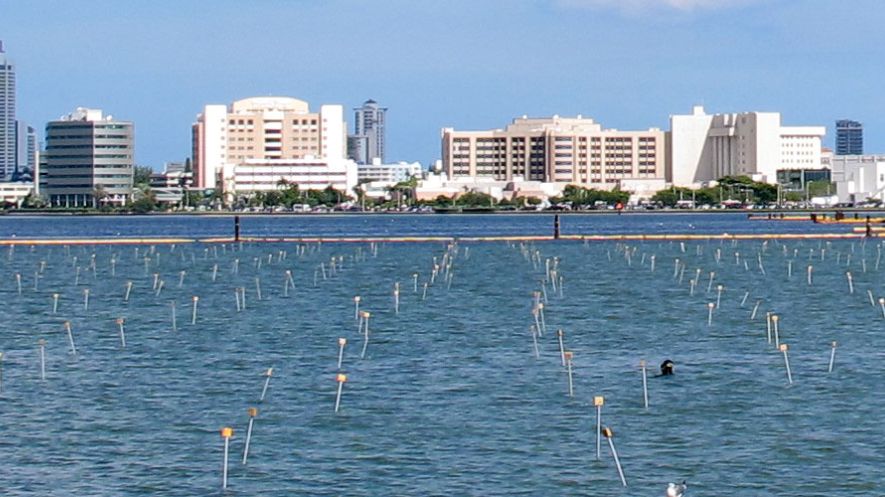CSA Ocean Sciences Inc. (CSA) has successfully completed the transplantation of over 115,000 seagrass plants into a newly filled dredge hole north of the Julia Tuttle Causeway in Miami, Florida as part of the overall environmental mitigation requirements for the deepening and widening of Miami Harbor. CSA was part of the Great Lakes Dredge and Dock LLC (GLDD) team that was awarded the prime contract by the U.S. Army Corps of Engineers. The “deep dredge” project took two years to complete and is the first federal navigation project in the southeast built to accommodate post-Panamax vessels.
During August and September 2015, CSA staff systematically planted 14.3 acres of the 17-acre mitigation site using donor manatee grass (Syringodium filiforme) harvested from a nearby healthy seagrass community in Biscayne Bay. CSA utilized proven methods developed and published by Dr. Mark Fonseca, a world-renowned marine ecologist and Vice President of Science at CSA. Regular coordination with the GLDD team and federal and state agencies was necessary during the planning and implementation phases due to the location of the mitigation site (situated in a state Aquatic Preserve), the high-profile nature of the project, and low success rates associated with prior large-scale seagrass restoration projects.
Sensitive to desiccation and temperature extremes, seagrass plants were carefully extracted from the sediments of an approved seagrass bed, sorted, and assembled into 29,000 individual bare root “planting units” while ensuring they remained bathed in ambient seawater using a custom-made on-board circulating system. Scientific divers meticulously planted each planting unit by hand to ensure the growing tips of the plant were buried to the appropriate depth below the sediment surface. To provide passive fertilization to the plants through the introduction of coastal bird feces, over 1,150 bird roosting stakes were installed within the planted areas of the mitigation site.
In early October, CSA conducted the first monitoring survey to assess the success of planting and verify that the planting units remained firmly anchored in the sediment. A comprehensive evaluation of the entire planted area and all planting units was conducted and, despite frequent feeding by manatees on the planted seagrass, the percent survival was documented at 97.6%—much higher than the mandated 70% survival. Dr. Fonseca noted that “barring any unforeseen disturbances, this is on course to be one of the largest and most successful actively planted, commercial (seagrass mitigation) projects to date.”
CSA Ocean Sciences Inc. specializes in consulting services for federal, state, and private industry clients in multidisciplinary projects, integrating science and technology to evaluate environmental activities throughout the world. CSA offers a wide variety of services related to environmental management, geospatial data utilization and community planning to support clients working in marine, estuarine, wetland, freshwater, and terrestrial habitats throughout the United States and overseas.





